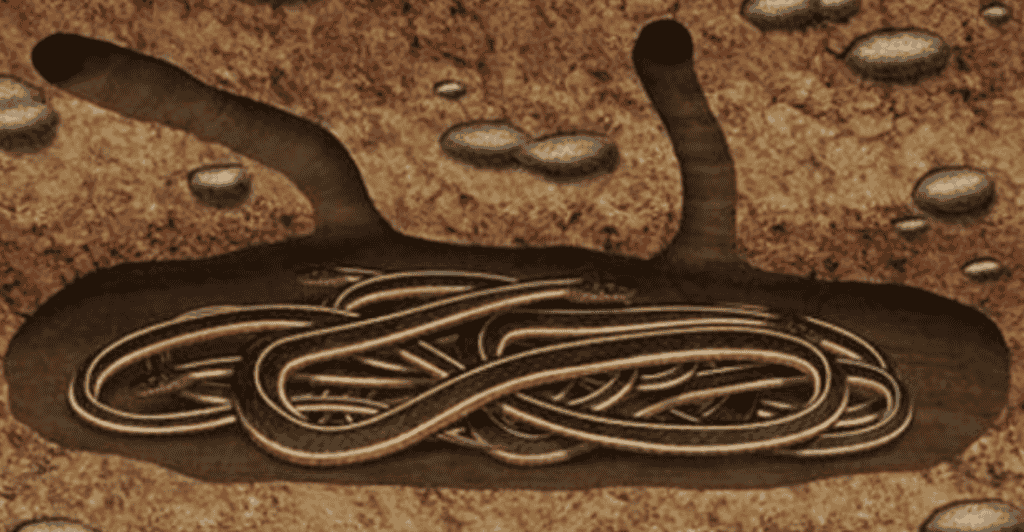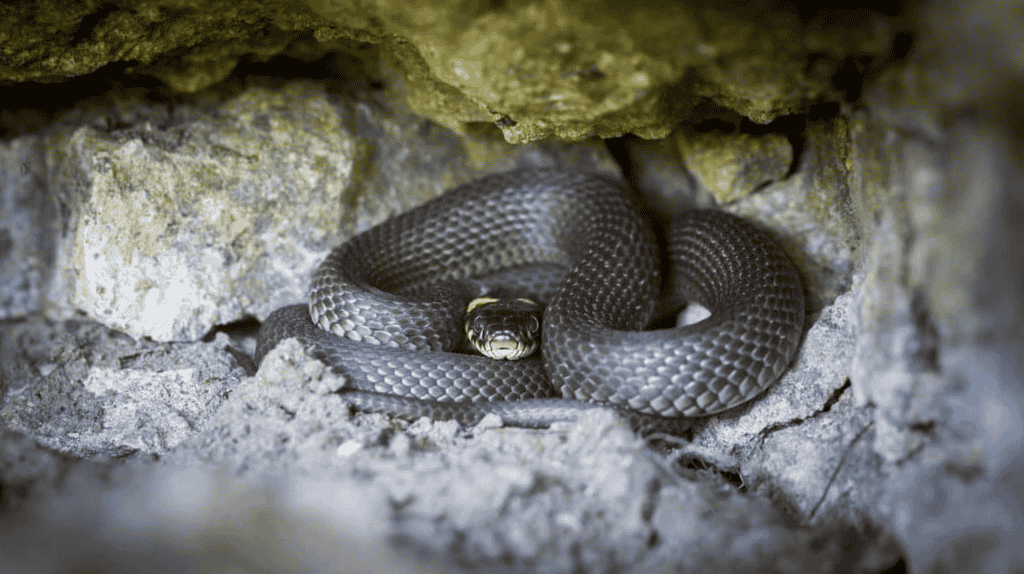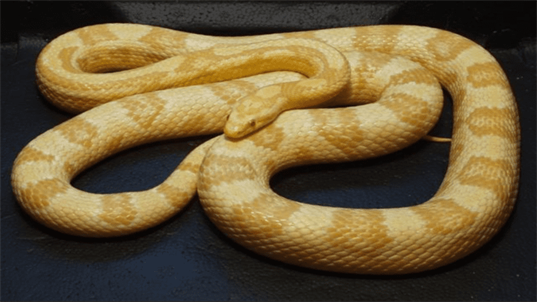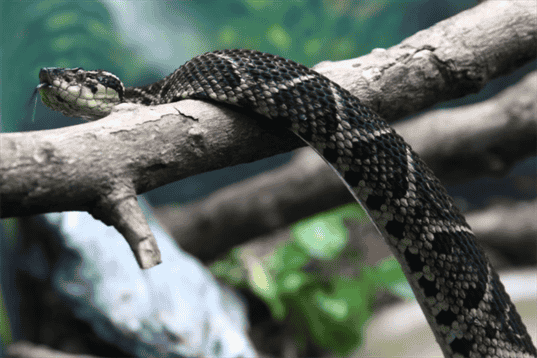Do Snakes Hibernate – Snakes Hibernation
Snakes are cold-blooded animals that are found in a variety of environments around the world. They have evolved to survive in different conditions; one adaptation some species have developed is hibernation. Hibernation is a state of decreased metabolic activity and reduced body temperature that allows animals to conserve energy during food scarcity or adverse weather conditions. Not all snakes hibernate, but many snakes have a hibernation period, also known as brumation, during which they become less active and often burrow underground or hide in rocky crevices.
Do all Snakes Hibernate?
Do Snakes Hibernate? Not all snakes hibernate. Hibernation is a survival adaptation to cold weather and food scarcity, and it is found mainly in snakes that live in temperate and colder regions. Snakes in tropical areas or deserts do not hibernate because they can find food and warmth year-round. In contrast, many species of garter and gopher snakes in North America and some European vipers do hibernate. Some species that live in areas with milder winters may have a reduced activity level but not fully hibernate.
What are the conditions required for snakes to hibernate?
The conditions required for snakes to hibernate include the following:
- Cold temperatures:
Hibernation is an adaptation to cold weather and low temperatures. For a snake to enter hibernation, the temperature must drop below the point at which it can maintain its body temperature.
- Lack of food:
Snakes need enough stored energy to survive hibernation. Therefore, they will typically stop eating and begin to lose weight before they enter hibernation.
- The right location:
Snakes will look for a safe, secure place to hibernate underground, in a rocky crevice, or a burrow. It will provide them with protection from predators and insulation from cold temperatures.
It’s worth noting that not all snakes need to have all these conditions to hibernate. Some species of snakes may enter hibernation even if they don’t meet all the requirements, and some species may not hibernate even if they meet all of them.

How long does snake hibernation last?
The length of snake hibernation can vary depending on the species and the environmental conditions. Hibernation periods can last from a few weeks to several months. For example, garter snakes in North America typically hibernate for about 4-5 months, while gopher snakes may hibernate for up to 7 months. Hibernation periods can also vary depending on the location, the severity of the winter, and the individual snake. Some snakes may come out of hibernation before the end of the winter if the weather warms up, while others may stay in hibernation until the spring.
How do snakes prepare for hibernation?
Snakes prepare for hibernation in a variety of ways. Some of the most common methods include:
- Eating:
Snakes will eat more than usual before hibernation to build up their fat reserves and have enough stored energy to survive the winter.
- Losing weight:
Some snakes lose weight before hibernation because they stop eating before they enter hibernation and also because they will be using their stored energy during the hibernation period.
- Finding a safe place:
Snakes will search for a safe and secure place to hibernate, such as underground caves, rocky crevices, or other protected spaces. It will provide them with insulation from cold temperatures and protection from predators.
- Lowering body temperature:
Snakes will lower their body temperature before hibernation. It is done by basking in the sun or other heat sources.
- Hormone changes:
Before hibernation, snakes will experience changes in hormone levels that help to prepare their bodies for the hibernation period.
It’s worth noting that not all snakes will follow all these steps, some species may have slightly different methods to prepare for hibernation, and some species may not hibernate at all.

What do snakes eat during hibernation?
Snakes do not eat during hibernation. They survive on the stored energy they accumulate before entering hibernation. They will stop eating and lose weight before they enter hibernation because they need to have enough stored energy to survive the hibernation period. During the hibernation period, snakes rely on their stored body fat, so the more body fat they have before hibernation, the better their chance of survival.
Snakes will not eat, drink or defecate during the hibernation period, which is why they need to have a good body state and enough fat reserves before entering hibernation. It’s worth noting that if a snake is awakened from hibernation or doesn’t have enough stored energy, it may struggle to survive and may be unable to return to hibernation.
Where do snakes hibernate?
Snakes hibernate in various locations, depending on the species and the environmental conditions. Some familiar places where snakes hibernate include:
- Underground burrows:
Many snakes, such as garter and gopher snakes, will hibernate underground in caves or dens.
- Rock crevices:
Some snakes, such as European vipers, will hibernate in rocky crevices or caves.
- Abandoned animal burrows:
Some snakes will take over abandoned burrows of other animals, such as rodents, to hibernate in.
- Trees:
Some snakes, such as the rough green snake, will hibernate in trees.
- Artificial structures:
Some species of snakes, such as the eastern garter snake, will hibernate in artificial structures like sheds, basements, and crawl spaces.
Not all snakes hibernate in the same places, and some species may have more specific requirements for their hibernation location, such as a particular temperature or humidity level. Also, some species may not hibernate at all.

How do snakes survive during hibernation?
Snakes survive during hibernation by slowing their metabolism and reducing their body temperature.
- Metabolic rate: Snakes lower their metabolic rate during hibernation, which means they use less energy and can survive on the stored energy they accumulate before entering hibernation.
- Body temperature: Snakes also lower their body temperature during hibernation. It is done by basking in the sun or other heat sources before entering hibernation and finding an excellent place to hibernate. Lowering their body temperature also means they use less energy to keep warm.
- Breathing: Snakes also slow down their breathing during hibernation. It is done by taking fewer and deeper breaths, which helps to conserve energy.
- Immune system: During hibernation, the snake’s immune system also slows down, which helps to conserve energy and prevent injury.
It’s worth noting that not all snakes hibernate similarly and that some species may have slightly different methods to survive during hibernation. Also, if a snake is awakened from hibernation or doesn’t have enough stored energy, it may struggle to survive and may be unable to return to hibernation.

Can snakes be awakened from hibernation?
Snakes can be awakened from hibernation, but it’s not recommended as it can be dangerous for them. Hibernation is a survival adaptation that allows snakes to conserve energy through the winter when food is scarce, and temperatures are too cold for them to be active. If a snake is awakened from hibernation, it will use up valuable energy reserves and may not be able to return to hibernation, which could lead to starvation or death. Additionally, if the snake is not fully hibernated, it may not be able to survive the sudden increase in body temperature and activity.
Also, it’s worth noting that not all snakes hibernate in the same way, and some species may be more resistant to being awakened from hibernation than others. Some species may be unable to return to hibernation if awakened and may struggle to survive if the conditions are not suitable for them.
It’s best to leave hibernating snakes undisturbed and wait for them to come out of hibernation when the weather warms up naturally and food becomes more available.
What are the effects of hibernation on snake’s health?
Hibernation can have positive and negative effects on a snake’s health, depending on the species and the environmental conditions.
- Positive effects:
Hibernation allows snakes to survive the winter months when food is short and temperatures are too cold for them to be active. It also helps to conserve energy and prevent injury. Snakes also use this time to repair any damage to their bodies during the previous months.
- Adverse effects:
Some negative effects of hibernation include weight loss, dehydration, and starvation if the snake does not have enough stored energy to survive the hibernation period. Additionally, if the snake is not fully hibernated, it may not be able to survive the sudden increase in body temperature and activity.
- Disturbance:
If a snake is awakened from hibernation or doesn’t have enough stored energy, it may struggle to survive and may be unable to return to hibernation. It can lead to starvation or death.
It’s worth noting that not all snakes hibernate in the same way, and some species may be more resistant to the effects of hibernation than others. Also, some species may not hibernate at all. It’s essential to ensure the snake is in good health and has enough stored energy before entering hibernation and providing a suitable environment for them to hibernate in.
FAQs
Do snakes move around in winter?
Some snakes move around in the winter, although most species will become less active during the winter months and may enter hibernation to survive the cold weather and food scarcity. Some species of snakes that live in milder climates or tropical regions may continue to be active during the winter, but others that live in colder areas will hibernate.
How do you know if a snake is hibernating?
A snake is hibernating if it is in a state of decreased metabolic activity, reduced body temperature, and becomes less active. It is usually found in a safe and secure place, such as underground caves, rocky crevices, or other protected spaces. It may not move or respond to stimuli and will not eat or drink during this time.
Do snakes go to sleep in winter?
Snakes do not go to sleep in the winter. Instead, they enter a state of hibernation, also known as brumation. It is a state of decreased metabolic activity and reduced body temperature that allows them to conserve energy during food scarcity or adverse weather conditions. Unlike sleep, hibernation is not daily and can last several months.
Conclusion
In conclusion, not all snakes hibernate, but many snakes have a hibernation period, also known as brumation, during which they become less active and often burrow underground or hide in rocky crevices. Hibernation is an adaptation to cold weather and food scarcity, and it is found mainly in snakes that live in temperate and colder regions. Snakes in tropical areas or deserts do not hibernate because they can find food and warmth year-round. Hibernation allows snakes to survive the winter months when food is scarce, and temperatures are too cold for them to be active.







